Further to my recent discussion of the Fulvia's suspension, I now propose to suggest a few modifications that might be of interest to those of you who are not too concerned with originality and wish to improve the handling and road holding of a car that is already (when in good order) superb in these regards..
I start by reminding my readers that every production car is a compromise between various conflicting parameters: performance, handling, road-holding, comfort, price, running costs, luggage capacity etc. If you modify your car you will shift the compromise: this is usually the aim of course, but make sure that you do not create something that you will grow to hate!
My previous article described the general arrangement and construction of the Fulvia's suspension; in common with many production cars there is a fair amount of rubber about. Rubber as I remarked is something that gets in the way of precision handling (of course I am not alluding to tyres here although they are certainly intimately associated with this subject).
It is relatively easy to get rid of the rubber at the back: simply replace the Silentblocs with bushes of superior material. On my own car I have used Nylatron, a lubricant-impregnated nylon material. Each bush runs on a specially made stainless steel tube which is clamped between the spring hangers. It is necessary of course to ream the bush to size after it has been pressed into the "eye" of the spring. This is all straightforward for SIIs but SIs have a different arrangement at the front ends of the rear springs. I used Nylatron again with success but a certain amount of fettling was necessary to get it to work properly.
At the front, I again used Nylatron. here for the upper wishbone retained the original steel bushes but replaced the rubber housings, the steel shims and the original thin nylon bushes with a Nylatron part. It the making of these it was found that considerable precision was required to ensure an accurate fit. Sadly I do not have pictures of these, so I hope at least that the description is helpful. And you can always ask a question - use the "comments" facility at the bottom of this piece. Also I can point you towards someone who can make these parts 5he still has the sketches he made when doing mine).
For the lower wishbone bushes again I used Nylatron; with SII cars again this is simple with a solid bush running on a tube with small distance pieces to prevent the wishbone moving longitudinally. For S1s again, one would have to replace the original parts with Nylatron replicas.
Next, the anti-roll bars. It is most important to remember that tyre technology has improved enormously since the Fulvia's era; more grip = more roll, obvious if you think about it.
On discovering years ago that the 2000 sedan had a thicker front bar, I immediately sourced on and fitted it. The original bar is 16mm thick, whilst the 2000 one (Sedans only!) is 18mm, which makes it about 60% stiffer. I expected increased understeer but found instead that there was no difference in this regard and that turn-in was improved. As I made gradual improvements I started to sense (the Fulvia is always very communicative) that the rear of the car was rolling excessively. Unfortunately all Fulvias and Flavias that have rear bars have the same 14mm thick component so I had one made. It is 16mm thick so again around 60% stiffer than the original; it was a great improvement. Being a simple shape unlike the front bar, it was cheap. The firm who made it used EN16T steel and because of the relatively small size it was cold-bent thus obviating expensive heat treatment.
One really nice thing about these thicker bars is that they are a nice tight fit into the original bushes! In fact, I believe that it is now possible to buy polyurethane anti-roll bar bushes for Fulvias, which would result in further improvement, though I doubt that they are available for the larger bars I have described here.
Once again, I apologise for the lack of pictures this time. Next time I shall be having a look at the dreaded rubber that connects the upper wishbone to the spring and also I shall add a few words about the springs themselves. And I will have a picture or two.
À bientôt
I start by reminding my readers that every production car is a compromise between various conflicting parameters: performance, handling, road-holding, comfort, price, running costs, luggage capacity etc. If you modify your car you will shift the compromise: this is usually the aim of course, but make sure that you do not create something that you will grow to hate!
My previous article described the general arrangement and construction of the Fulvia's suspension; in common with many production cars there is a fair amount of rubber about. Rubber as I remarked is something that gets in the way of precision handling (of course I am not alluding to tyres here although they are certainly intimately associated with this subject).
It is relatively easy to get rid of the rubber at the back: simply replace the Silentblocs with bushes of superior material. On my own car I have used Nylatron, a lubricant-impregnated nylon material. Each bush runs on a specially made stainless steel tube which is clamped between the spring hangers. It is necessary of course to ream the bush to size after it has been pressed into the "eye" of the spring. This is all straightforward for SIIs but SIs have a different arrangement at the front ends of the rear springs. I used Nylatron again with success but a certain amount of fettling was necessary to get it to work properly.
At the front, I again used Nylatron. here for the upper wishbone retained the original steel bushes but replaced the rubber housings, the steel shims and the original thin nylon bushes with a Nylatron part. It the making of these it was found that considerable precision was required to ensure an accurate fit. Sadly I do not have pictures of these, so I hope at least that the description is helpful. And you can always ask a question - use the "comments" facility at the bottom of this piece. Also I can point you towards someone who can make these parts 5he still has the sketches he made when doing mine).
For the lower wishbone bushes again I used Nylatron; with SII cars again this is simple with a solid bush running on a tube with small distance pieces to prevent the wishbone moving longitudinally. For S1s again, one would have to replace the original parts with Nylatron replicas.
Next, the anti-roll bars. It is most important to remember that tyre technology has improved enormously since the Fulvia's era; more grip = more roll, obvious if you think about it.
On discovering years ago that the 2000 sedan had a thicker front bar, I immediately sourced on and fitted it. The original bar is 16mm thick, whilst the 2000 one (Sedans only!) is 18mm, which makes it about 60% stiffer. I expected increased understeer but found instead that there was no difference in this regard and that turn-in was improved. As I made gradual improvements I started to sense (the Fulvia is always very communicative) that the rear of the car was rolling excessively. Unfortunately all Fulvias and Flavias that have rear bars have the same 14mm thick component so I had one made. It is 16mm thick so again around 60% stiffer than the original; it was a great improvement. Being a simple shape unlike the front bar, it was cheap. The firm who made it used EN16T steel and because of the relatively small size it was cold-bent thus obviating expensive heat treatment.
One really nice thing about these thicker bars is that they are a nice tight fit into the original bushes! In fact, I believe that it is now possible to buy polyurethane anti-roll bar bushes for Fulvias, which would result in further improvement, though I doubt that they are available for the larger bars I have described here.
Once again, I apologise for the lack of pictures this time. Next time I shall be having a look at the dreaded rubber that connects the upper wishbone to the spring and also I shall add a few words about the springs themselves. And I will have a picture or two.
À bientôt

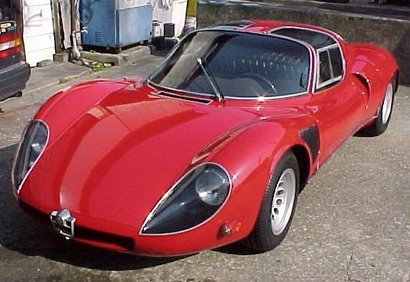
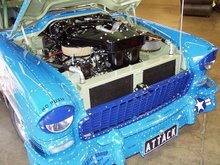
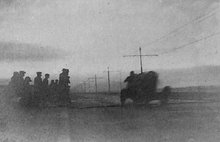

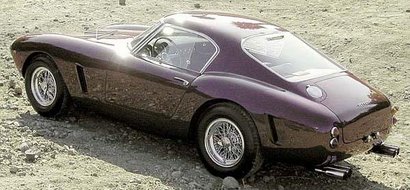
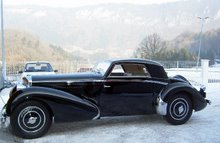
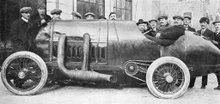


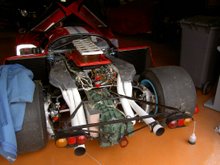

1 comment:
Hi Paul,
Nice to read again what I preached as well. Thicker bars work! I went slightly further and had besides the 16mm rear also a non standard 19mm front bar made and use superflex bushes for the bars. The S1 wishbones work great with the superstable bushes available through Viva-Lancia. I'm still busy with composite springs to replace the steels and will keep you and your blogreaders posted.
Post a Comment